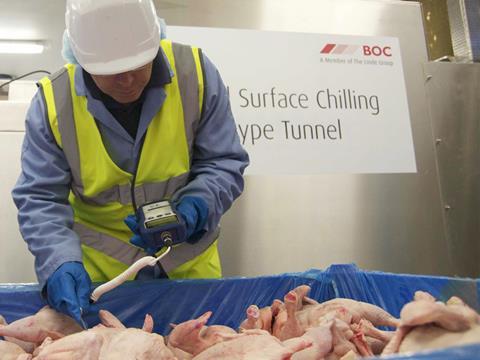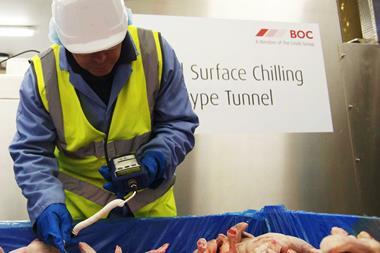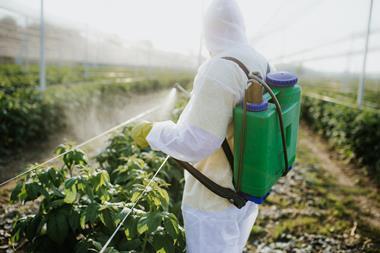
If you fear you may have had too much fun this Bank Holiday weekend and are looking for penance, I can warmly recommend the Food Standards Agency’s latest update on campylobacter testing.
Over 15 fun-filled pages, the agency details the results of its last quarterly tests on supermarket chickens before the survey is re-launched with a new methodology later this year.
Concerns about methodology are precisely the reason the survey needs to be relaunched, and much space in the report is therefore devoted to explanations on precisely what the problem with the old methodology was and how that’s affected the reliability of the FSA’s data.
These concerns are also why the retailer league table the FSA usually publishes with its quarterly campylobacter updates is missing this time. So in the absence of those tables, what exactly can this latest campy update tell us?
The top-line message is the same it’s been for some time: “These results are moving in the right direction and I am delighted with progress,” director of policy Steve Wearne is quoted as saying.
But the actual report itself contains a few bits that sound rather more alarming. We may know a lot less about how successful the fight against campylobacter has been to date than previously thought. Because of the uncertainty introduced by the methodological issues, there are now a possible “three versions of the truth” when it comes to the state of campylobacter in retail chickens, the FSA writes.
And for chickens showing the highest levels of contamination (ie the chickens that are the biggest concern), one of these three versions suggests contamination rates could, in fact, be rising and not – as previous updates have suggested – be coming down. Other versions show no statistically significant reduction in contamination rates once the methodology issues have been factored in.
Given retailers, suppliers and – to an extent – the FSA have spent much of the past year high-fiving each other over their campylobacter breakthroughs and falling contamination rates, this is a confusing message, to say the least. Is the FSA saying that progress hasn’t been as impressive as previously thought?
For context, a quick (and very basic) summary on why the FSA is concerned about methodology and data reliability. When the campylobacter survey first started, the FSA decided it would use neck skin to determine contamination rates because that is typically the most contaminated part of the bird. Laboratories were told to take 25g of neck skin from each bird and then use this to run their tests.
As the survey has progressed and processors and retailers have started using different interventions to bring contamination rates down, a growing number of them have started trimming back the neck skin. This makes sense – after all, it’s removing the most heavily contaminated part of the chicken – but it’s also left laboratories with less skin than the required 25g. They have, therefore, had to add in other bits of skin (typically breast skin) to get to the sample size they need. Breast skin, however, isn’t typically all that heavily contaminated – and so may not be a reliable indicator of how contaminated a bird is.
Which brings us to the crux of the matter: what the FSA update seems to suggest with its “three versions of the truth” is there’s a chance, therefore, that falling contamination rates over the past year were down to different bits of skin being tested and not because broader in-chain interventions have been successful.
When I caught up with Dr Kevin Hargin, the agency’s head of disease control, he was clear that it really isn’t as black and white as that, and stressed real progress had been made. “This isn’t just purely a neck skin trimming exercise,” he told me. “There has been a genuine decrease. I know first hand the efforts the industry has made to bring contamination rates down.”
But there is clearly a question mark over how much neck skin trimming contributed to falling rates versus other interventions.
Hargin and his team are working on clearing this up with the new methodology they are currently developing (more details of which will be revealed in The Grocer later this week), and are hopeful they will be able to retain comparability with previous survey data. This would be an important achievement: if the new methodology creates a fresh ‘year zero’ for campy measurements in retail chicken, it will be many more months before there’s clarity on precisely how fast contamination rates are falling, and conclusions can be drawn as to why.
Many retailers and processors also conduct their own testing that may not be aligned with the new FSA methodology, so there’s a risk of conflicting data sets being put into the public domain.
That would be as detrimental to industry as much as it would be to public understanding of campylobacter.
Some may argue (with some merit) that all that matters is that consumers end up with less contaminated chickens – and if neck trimming is the ‘trick’ to achieving that, who cares if other in-chain interventions make much of a difference?
But campylobacter interventions are expensive, and no-one in the industry will want to deploy them if it’s not clear they’ll deliver results.
The first set of results under the new methodology will be out in early 2017. They should bring into sharper focus what does, and doesn’t, work in the fight against campylobacter – and present a clearer picture on just how much progress really has been made in fighting this incredibly complex bug.















No comments yet